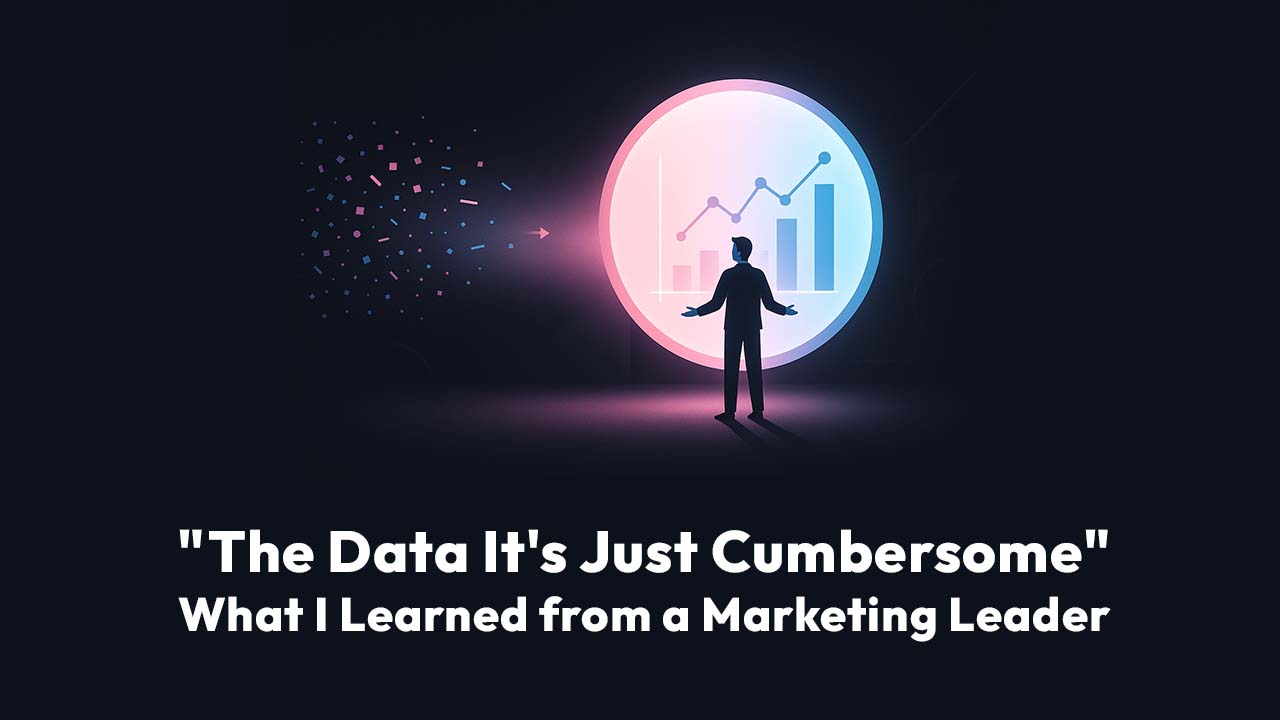"We do get to this data eventually. It's, it's cumbersome, but... you know."
That trailing "you know" hit me harder than any feature request could. It wasn't frustration or anger—it was resignation. The quiet acceptance that getting meaningful insights from your marketing data is supposed to be hard, supposed to take days, supposed to require duct-taping together five different platforms with spreadsheets and manual exports.
But here's what really stopped me in my tracks: this wasn't a small startup with limited resources. This was a company with 12,000 customers, global operations, and a sophisticated marketing team. If anyone should have "figured out" their data analytics, it should be them.
The Modern Marketing Tech Stack Paradox
As our conversation continued, the picture became clearer. This team wasn't lacking tools—they were drowning in them:
- Marketo for marketing automation and CRM
- Google Analytics 4 for web analytics
- SEMrush for keyword research and SEO
- Google Search Console for search performance
- LinkedIn Ads for B2B targeting
- YouTube Analytics for video campaigns
- Pendo for product analytics
- Multiple internal platforms tracking customer behavior across products
"As with every other marketing team in the world," she explained, "we work across a number of tech platforms, and it's always a challenge for us to find one place where we can bring all the data sets together."
The irony wasn't lost on me. We live in an era of unprecedented data abundance. Marketing teams have more tools, more metrics, and more visibility than ever before. Yet the fundamental question—"What's actually working and why?"—remains maddeningly difficult to answer.
When "Advanced" Becomes "Impossible"
The conversation took an interesting turn when they described a use case that should be straightforward: identifying upsell opportunities.
"If I want to send an upsell message to this customer who only uses this platform, this product, but I want to upsell them this way... that's a huge challenge for us."
Think about that for a moment. They have all the data:
- Which products each customer uses (in their product analytics)
- Customer engagement levels (in their behavioral tracking)
- Marketing attribution (in their marketing automation)
- Customer firmographics (in their CRM)
But connecting those dots to answer a simple business question—"Who should we target for an upsell to Product X?"—requires:
- Exporting data from multiple systems
- Manual data blending in spreadsheets (with VLOOKUPs, if you're lucky)
- Creating segments manually
- Re-uploading to the marketing automation platform
- Crossing your fingers that nothing broke in translation
And this process needs to be repeated. Every. Single. Time.
The Integration Trap
What happened next in our demo was even more revealing. As we showed different capabilities, the questions weren't about features or functionality. They were about integrations:
- "Do you connect to Marketo?"
- "What about SEMrush? We use that daily."
- "Google Search Console—is that available?"
When we explained that some integrations were on the roadmap or required custom work, I could feel the energy shift. Not because our platform wasn't capable—but because adding another tool that doesn't connect seamlessly to their existing stack felt like trading one problem for another.
This is the trap that sophisticated buyers fall into: They can envision the value, but the path to get there feels like it requires even more complexity. Another platform to integrate. Another onboarding process. Another tool that might not play nicely with their existing setup.
The Real Problem: Not the Data, But the Distance
Here's what crystallized for me during this call: The problem isn't that marketing teams lack data or even lack analytics tools. The problem is the distance between question and answer.
When a CMO asks in a meeting, "Why did our enterprise revenue drop last month?"—the time from question to insight looks like this:
Current state:
- Day 1: Request goes to marketing ops
- Day 2-3: Marketing ops exports data from 4 systems
- Day 4-5: Data analyst blends data in SQL or Python
- Day 6-7: Create visualizations and analysis
- Day 8: Present findings (which may already be outdated)
- Total: ~2 weeks
What it should be:
- Minute 1: Ask the question in your natural workflow
- Minute 2: Get comprehensive analysis with multiple hypotheses tested
- Minute 3: Share insights with the team
- Total: 3 minutes
The gap between these two realities represents billions of dollars in missed opportunities, slow decision-making, and insights that arrive too late to matter.
The "Show Me With My Data" Moment
Toward the end of the call, the marketing director said something that completely reframed my understanding of the sales process:
"It's hard for me to understand, unless you've got my data sources, how that's going to work. I would really love to know... what is this showing me that I can't see today?"
She wasn't being difficult. She was being honest about what actually drives purchasing decisions in the modern enterprise: proof that YOUR solution works with MY specific data, in MY specific context, solving MY specific problems.
Generic demos are interesting. Demos with your actual data are compelling.
This realization has implications far beyond our product. It speaks to how sophisticated buyers evaluate any analytics or data platform today. They've been burned before by tools that looked great in demos but fell apart when confronted with their specific:
- Data sources
- Integration requirements
- Workflow complexities
- Organizational constraints
What This Means for the Industry
This conversation represents a broader shift I'm seeing across hundreds of customer interactions. The next generation of analytics platforms won't be evaluated primarily on features or even on AI capabilities. They'll be evaluated on three criteria:
1. Integration Completeness
"Does it work with ALL my tools, not just the popular ones?"
Not having a Marketo connector isn't a minor inconvenience—it's a deal-breaker. Every missing integration represents weeks of custom development or workarounds, which defeats the entire purpose of buying a platform solution.
2. Time to Value
"Can I prove value with my own data before committing?"
Marketing teams don't have 6 months for a pilot. They need to connect their data sources, ask a few critical questions, and get insights that justify the investment—all within their first week.
3. Complexity Trade-offs
"Does this reduce my overall complexity, or just shift it?"
Adding another platform only makes sense if it eliminates more complexity than it creates. The bar for new tools is higher than ever: prove you can simplify my world, not complicate it further.
The Opportunity Hiding in Plain Sight
Here's what gives me hope from conversations like this: Every expression of skepticism ("we need to see it with our data") and every articulation of pain ("it's cumbersome") represents a massive market opportunity.
There are thousands of marketing teams right now, sitting in meetings, asking questions they know are answerable—if only they could get their data to cooperate. They're not lacking intelligence or sophistication. They're lacking tools that meet them where they are, with the data sources they already use, in the workflows they already have.
The team I spoke with this week is ready to make better decisions. They want to target the right customers with the right messages at the right time. They want to measure what's working and double down on it. They want to move from intuition-based marketing to insight-driven marketing.
They just need a bridge between where they are and where they want to be—one that doesn't require them to rebuild their entire tech stack or hire a team of data engineers.
Conclusion
I left this call with renewed conviction about three things:
First, the bar for analytics platforms is higher than we think. It's not enough to have impressive AI or machine learning capabilities. You need to work seamlessly with the specific tools your customers already rely on—even the ones you think are "legacy" or "not strategic."
Second, show, don't tell becomes exponentially more important as buying sophistication increases. The gap between a impressive demo and a tool that works with real customer data is the gap between interest and purchase.
Third, the market is ready for something better. When a marketing leader says "we do get to this data eventually, it's just cumbersome," they're not defending the status quo—they're asking for help. That resignation in their voice? It's actually an invitation to solve a real problem.








.png)